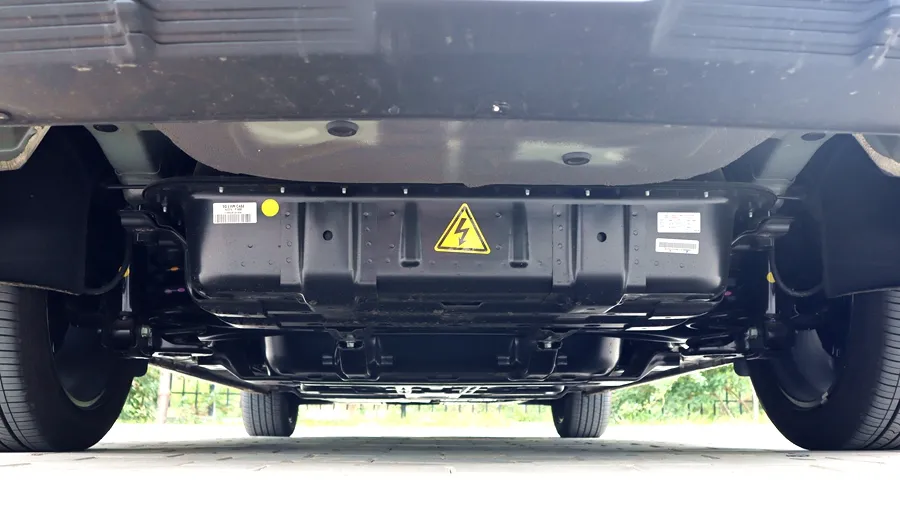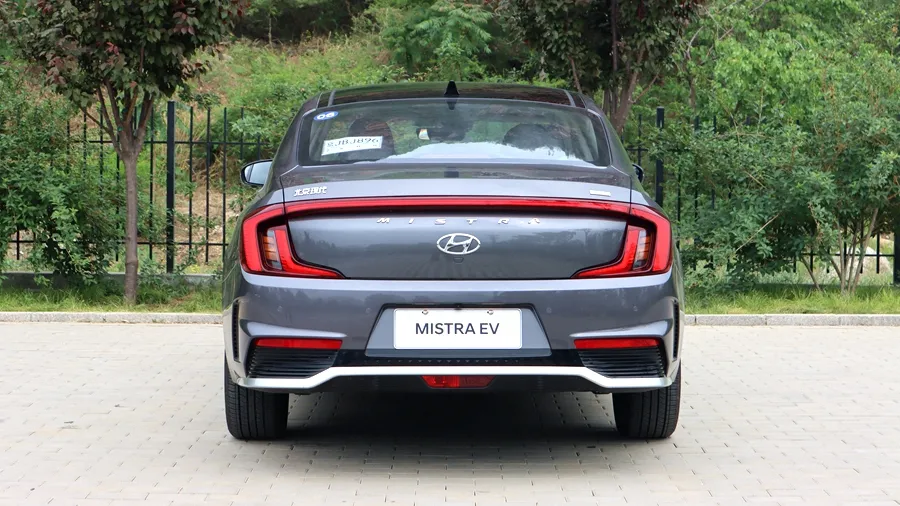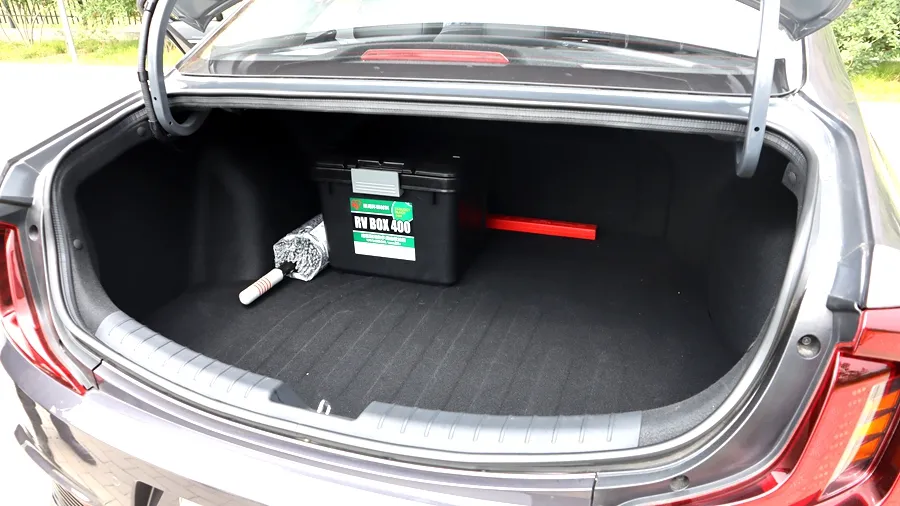Author: Tian Hui
An electric car with a stable and reliable three-electric system and a high level of intelligence may be the next hot spot in the electric car market. Moreover, its cost performance is also very prominent.
The Beijing Hyundai Manti pure electric vehicle is such a car.

The Manti pure electric vehicle with a price range between 178,800 yuan and 203,800 yuan is positioned as a mid-size sedan. Its wheelbase is up to 2,770 mm, which is more prominent among vehicles of the same price range.
In terms of cruising range, the Manti pure electric vehicle can reach 520 km under operating conditions. In terms of intelligence, it is equipped with a Baidu Intelligent Network Connection 3.0 system and up to 23 ADAS intelligent driving assistance system functions.
Considering that there has been a big discount on Hyundai’s electric cars shortly after they were launched, the cost performance is still high if there is a large discount on the terminal selling price of the Manti pure electric vehicle.
When consumers are no longer resistant to electric vehicles, the private electric vehicle market quietly opens up. The traditional grading based on power and space size in the traditional car market is expected to continue in the electric vehicle market. Whether the car products launched based on the traditional grading can be accepted by consumers after adding intelligent functions is worth paying attention to.
With this question in mind, on a cloudy and rainy early summer day, the “Electric Car Observer” test drove the Beijing Hyundai Manti pure electric vehicle.
Really Low Energy Consumption
12.5 kWh/100 km, this is the energy consumption level of the Manti pure electric vehicle when loaded with 3 people running at high speed.
The route of this test drive was from downtown Beijing to Yanxihu in Huairou and back. The energy consumption of the Manti pure electric vehicle was tested on the return trip.

The mileage counter of the vehicle was cleared before the energy consumption test started. The temperature was around 28°C and it was cloudy. The air conditioning was set to automatic wind at 24°C, and there were 3 adult males in the car. More than 95% of the roads were highways.

After driving for 83.3 km and arriving at the destination from Yanxihu in Huairou, the total driving time was 1 hour and 18 minutes, the average speed was 64 km/h, and the power battery pack dropped from 82% to 66%. On average, it can travel 5.2 km per 1% of the power.The driving range is 520 kilometers and the average driving range per 1% power is exactly 5.2 kilometers. Although it is not a rigorous energy consumption test, it is still a severe test for the Niro pure electric vehicle with three adult men and air conditioning turned on throughout the whole journey, even at high speeds.
However, from the actual test level, the actual driving range of the Niro pure electric vehicle is not much different from the driving range under working conditions, and the driving range is quite reliable.
The reliability of the three-electricity system has a great relationship with the reality of the driving range.
In terms of power battery, the Niro pure electric vehicle is equipped with a high-voltage ternary lithium power battery provided by CATL, with a capacity of 56.5 kWh and an energy density of only 141.4 Wh/kg, which is relatively conservative.

Interestingly, the power battery pack of the Niro pure electric vehicle is not a flat battery pack, nor a stacked design, but a bridge design. Part of the power battery pack is located between the front and rear axles of the vehicle, and the other part is located behind the rear axle of the vehicle.
This design can help improve the seating space of the second row in the car.

In terms of electric controls, the Niro EV adopts a three-in-one electronic control assembly, integrating the motor, electric control, and reducer. The peak output power of the motor is 135 kW, and the peak output torque is 310 N.m.

In terms of energy control, the IEB brake system, a self-developed Hyundai technology, can convert kinetic energy into electrical energy through energy recovery during the vehicle deceleration process. The Niro pure electric vehicle has four levels of energy recovery regulation, including strong, medium, weak, and off. When set to the strongest level, the efficiency of the Niro pure electric vehicle can reach up to 24%.
It is worth mentioning that the Niro pure electric vehicle is equipped with paddle shifters on both sides of the steering wheel for quickly adjusting the intensity of the energy recovery.
Stylish and Spacious
The Niro has launched two generations of models in China. The Niro pure electric vehicle we test drove this time is a pure electric vehicle based on the all-new Niro.

In terms of appearance, the Niro pure electric vehicle adopts the popular fully enclosed front design style, with a distinct layering sense in the front of the vehicle. The Niro pure electric vehicle’s headlights are designed in a popular split-type design, and all models are equipped with LED headlights.
At the front of the car, there is a charging port that does not affect the beauty of the car, but lacks some convenience in charging.

On the side of the car, the body of the KIA Niro Pure Electric Car is clearly visible. The length, width and height of the car are 4,815 mm, 1,815 mm and 1,470 mm respectively, with a wheelbase of 2,770 mm, belonging to the standard mid-size car. Unlike the fuel-powered version of KIA Niro, the pure electric version uses energy-saving wheels called “silver-black two-color whirlwind low wind resistance aluminum alloy wheels”.

The through-type taillight design, which is controversial in Hyundai’s new family design language, is retained on the KIA Niro Pure Electric Car. The difference from the fuel-powered version is that the KIA Niro Pure Electric Car changes the position of the reverse light to the lower middle part of the rear bumper, while the fuel-powered version is arranged on both sides.

In terms of rear design, the large D-pillar and the super large through-type taillights give the KIA Niro Pure Electric Car a sense of Volvo S90L style.

In terms of interior design, the KIA Niro Pure Electric Car adopts the popular dual-screen design. The size of the LCD instrument and the central entertainment screen are both 12.3 inches, and the central entertainment screen is designed to be biased towards the driver for easy use while driving.

The KIA Niro Pure Electric Car’s gear shifter adopts a button-style design, and on the side of the gear shifter, there is a hidden cup holder.

In the front of the gear lever, there is a Qi wireless charging pad. According to official data, the wireless charging power is 10W, and the surface of the pad is made of soft rubber to prevent the phone from slipping during use.
In terms of interior color matching, the MG Marvel R Electric has two interior color options: dark and light, corresponding to different interior styles.

The front driver’s seat of the MG Marvel R Electric is electrically adjustable and is equipped with electric lumbar support and seat heating.

Thanks to the 2770mm long wheelbase, the rear longitudinal space of the MG Marvel R Electric is spacious. Unfortunately, the rear seats are not designed with a fully flat floor. Passengers sitting in the middle will feel slightly uncomfortable.
In addition, the MG Marvel R Electric is user-friendly, as it also provides seat heating for the two rear seats and air conditioning vents in the rear.

The trunk of the MG Marvel R Electric has a capacity of 519L, and the overall depth is relatively long. However, it does not have the function of folding down the second-row seats, so it cannot be further expanded longitudinally.
Fully equipped with intelligent functions
The MG Marvel R Electric is powerful in terms of intelligent functions.
In terms of intelligent driving assistance, the hardware configuration of the MG Marvel R Electric is not outstanding, but the software functions are rich.

It is equipped with millimeter-wave radar and a monocular camera.
On the software level, the MG Marvel R Electric supports advanced driving assistance functions such as FCW front collision warning, LFA lane centering, HBA far and near automatic switching, SVM 360° panoramic imaging, SCC intelligent cruise control (with stop-and-go function), and HDA high-speed driving assistance.

During the test drive, the LFA lane centering function of the MG Marvel R Electric performed well on the high-speed highway with good visibility, and the SCC intelligent cruise control was also natural in the following process.
If Hyundai could add lane merging assistance function to the MG Marvel R Electric, it would further improve the convenience of driving assistance and hope to provide optional installation for consumers.In terms of smart car system, the collaboration between Hyundai and Baidu has brought many highlights to the smart car system.

In terms of smart functions, the Ioniq EV supports new trendy functions like Bluetooth unlocking, as well as Baidu CarLife online connectivity, which breaks down the barrier between the car and the phone.

The smart car system of the Ioniq EV can project images from cameras on both sides of the car onto the instrument cluster when the turn signal is activated, thereby further enhancing driving safety.
A Good Choice
In terms of handling, the Ioniq EV has a leaning towards comfort.

When encountering larger turns, the sway of the Ioniq EV is not noticeable. When the energy recovery is fully turned off, the driving experience of the Ioniq EV is similar to that of a fuel vehicle. For consumers who are used to driving fuel vehicles, the Ioniq EV can provide a nearly seamless transition experience.
Whether it is new consumers who are about to obtain a Beijing car purchase quota, or second-time car buyers who come from replacing fuel cars, the Beijing Hyundai Ioniq EV provides an almost identical driving experience as fuel vehicles, and also excels in aspects such as range, energy consumption per 100km, and smart features, among other vehicles in the same class.
Overall, the Ioniq EV is a good choice when it comes to buying a car.
This article is a translation by ChatGPT of a Chinese report from 42HOW. If you have any questions about it, please email bd@42how.com.